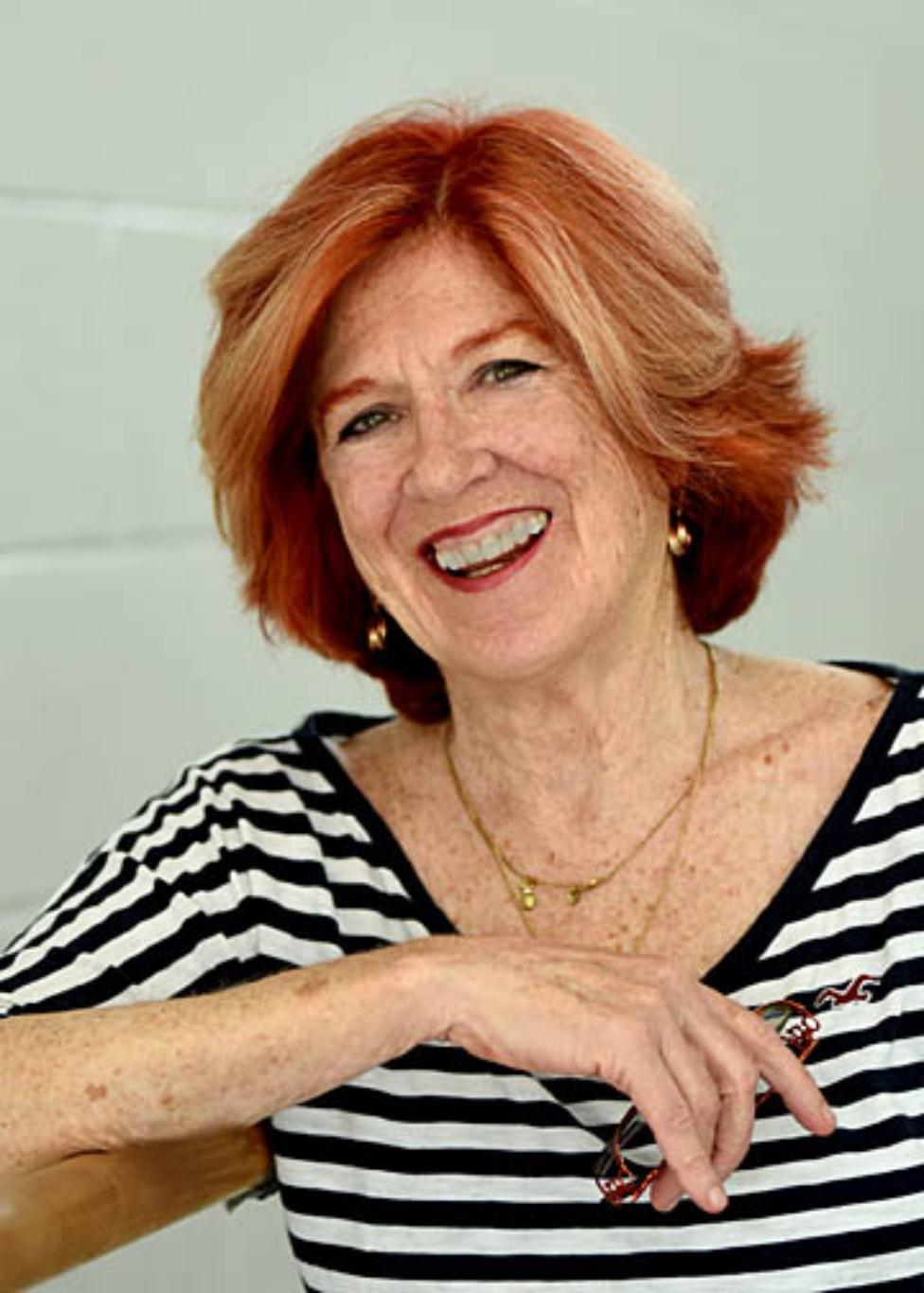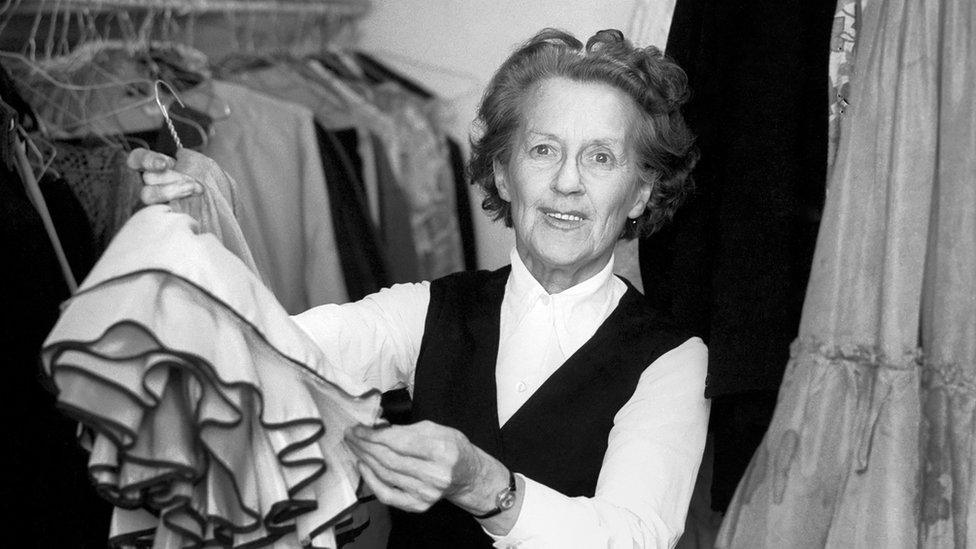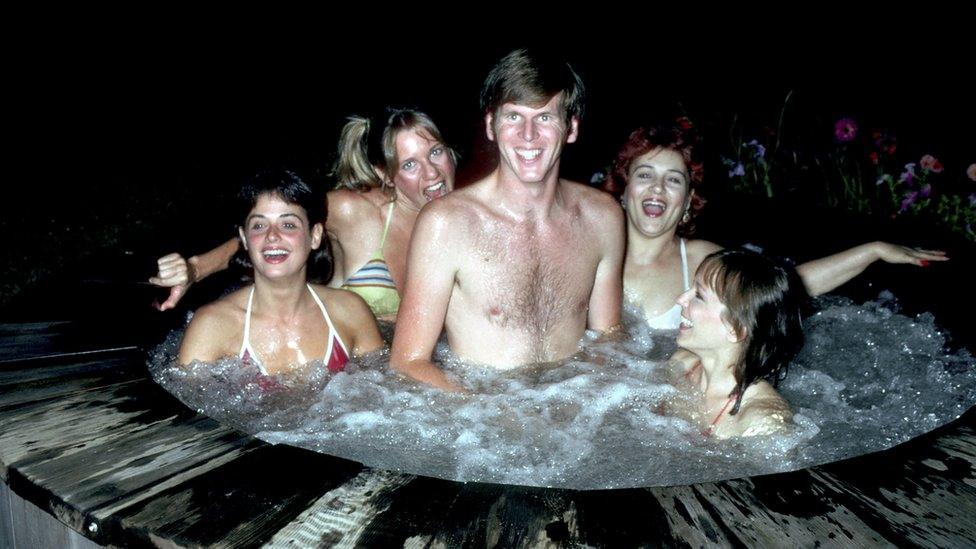Oh! Calcutta!: How nude 70s stage show could still rouse the critics
- Published

Oh! Calcutta! was made up of music and dance sketches
It's half a century since Oh! Calcutta! opened in London, shocking some theatregoers and delighting others by bringing extended scenes of male and female nudity to British theatre for the first time.
It ran for years, though its former cast insist it was never just an exercise in titillating the audience. But attitudes to sex have changed, so could anyone possibly make a hit of Oh! Calcutta! all over again?
Margo Sappington and Linda Marlowe are perfectly aware that when people talk today about Oh! Calcutta! it's mainly because they - and the whole cast, male and female - got their kit off for much of the evening. At the time it was radical.
The show was a collection of sketches and songs centred on sex. It was the creation of Kenneth Tynan, widely acclaimed as the most brilliant drama critic in London of the 1950s and 60s. He had invited writers such as Samuel Beckett, Tennessee Williams and John Lennon to supply material, though several contributions fell by the wayside.
The show's title is a play on the French "O quel cul t'as", meaning, "Oh what a backside you have".

Margo Sappington. who performed in both the New York and London productions, as she is today

Tynan was taking advantage of the ending in 1968 of Britain's stage censorship laws. Oh! Calcutta! opened at the Roundhouse in London in 1970, having been seen in New York the previous year.
The dancer Sappington choreographed and performed in both versions.
"I'd been working as assistant to Michael Bennett who later became famous for directing A Chorus Line. But Michael decided to pull out of Oh! Calcutta! and at the age of 21 I was suddenly asked to take over the choreography.
"It was always a given there would be nudity, though we never got naked until virtually the end of rehearsals. The director eased us into it very gently and by the time we took our clothes off it didn't seem so shocking. It was the same when I moved to London to do the show the next year."
Marlowe can boast a long and defiantly non-standard acting career, ranging from her early years as a 60s glamour girl of British cinema to several plays by Steven Berkoff, and three years as Sylvie Carter in EastEnders. Even so, she remembers being unconvinced at first that appearing naked on stage was for her.
"In 1970, for a serious actress it was unheard of. But I was asked to meet Ken Tynan and the director Clifford Williams.

Margo Sappington putting on an athletic performance in Oh! Calcutta!

"Tynan in particular persuaded me to do it. I remember him saying it was his baby and he was utterly passionate in his belief that British people needed to have a more serious and grown-up conversation about sex. And it turned out to be a great experience."
Oh! Calcutta! wasn't the first show in Britain to feature nudity. Even in the 1930s the Windmill theatre in Soho had attracted an enthusiastic male audience with its display of naked showgirls. The authorities permitted nudity so long as all performers remained still when unclothed.
The musical Hair is sometimes quoted as the first mainstream show in Britain to have included full nudity (with stage lighting kept very low) in September 1968. In fact the honour belongs to Maggie Wright who three months before that had played a naked Helen of Troy in an RSC production of Dr Faustus (also with Clifford Williams as director).
Sappington says dance had not originally been a major part of the concept. "But it was the best link between the sketches and it gave the nudity some aesthetic function and it celebrated the human body.

Kenneth Tynan with his wife Kathleen
"At the start of act two I danced a fully naked pas-de-deux with George Welbes. It lasted 10 minutes and was beautifully lit. The whole show began with the cast coming on clothed and gradually getting naked before putting on dressing gowns. There were very serious moments in the show but also funny moments and nudity could feature in either.
"Kenneth Tynan was trying to create an erotic entertainment which wasn't just stripping or burlesque. But in New York the original director Jacques Levy had weeded out material which hadn't played well.
"That included a sketch Ken Tynan had written himself about the history of knickers which to be honest was awful. Tynan tried to reinstate it when we came to London but it got dumped a second time. I think Mr Tynan wasn't happy."

The show was a hit nonetheless: it ran a decade in London and a total of 16 years in New York. Marlowe remembers that when the first audiences came in they had nudity on the brain.
"It was what all the papers had written about. Tickets were hard to get, partly because Mary Whitehouse and another morality campaigner called Lady Birdwood campaigned against us.
"As a result, the Metropolitan Police came in every night for a week. You could see them taking notes and writing the lines down. But nothing happened: the truth is there was nothing in the show that was obscene."
Marlowe still has her tattered old script from 1970, with multiple crossing-outs. Some of the sketches today seem more eccentric than erotic.
In Suite for Five Letters the cast, sitting on high stools, sing extracts from explicit letters written to magazines since 1939. The Empress's New Clothes features a Jane Austen heroine, Queen Victoria and Scarlett O'Hara from Gone with the Wind.

The show still had a wardrobe mistress
So in retrospect does Linda think the material was any good?
"I would have to agree with one or two critics at the time that some of the material was a bit banal. I know Ken Tynan wanted the show to be funny and energetic but it's interesting that almost no one could write the material about sex he'd hoped for. I enjoyed being in the show and it was a hit with audiences but it wasn't all fantastic writing."
So could Oh! Calcutta! be revived today in anything like its original form? Marlowe thinks too much has changed.
"What is obvious if you look at the original script is that it was the work exclusively of male writers. So the sketches almost entirely embody male fantasies and in some the women are victims of one sort or another.

Oh! Calcutta! 12th anniversary party
"Thankfully society has moved on and no one would accept a lot of it now. I've always considered myself a feminist but at the time I think we found the material less of a problem than we would now.
"Also there's nothing at all from an LGBT point of view. Gay culture was only just making its voice heard in 1970 and it simply wasn't in anyone's mind when they created the show.
"And it was essentially white, though we had a very beautiful black actress Brenda Arnaud in the cast. Only a few years later things might have been very different.
"I would be great if someone came up with an Oh! Calcutta! for 2021 or 2022. But it would need to take note of a lot of changes in society."